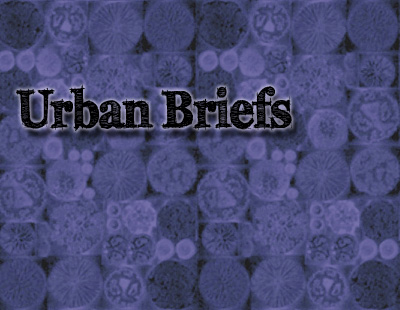
The City of Freiburg is often called Germany’s “ecological capital” and has been recognized internationally as one of the world’s most livable, sustainable and child-friendly cities. In 1993, IMCL awarded the City of Freiburg the IMCL (International Making Cities Livable) City of Vision Award. Since then, Freiburg has received numerous awards for its leadership in sustainable transportation planning, promotion of walking and biking, traffic calming mechanisms, human scale mixed-use development, renewable energy, protection of nature, and sustainability.

The story of modern Freiburg starts after the destruction of WWII when Freiburg is one of the only German cities to choose to reconstruct following the old medieval layout rather than the more modern square gridded and wide streeted plan almost all the other cities opted for. The result was the foundation for a living breathing ecocity: a dense, accessible, and mixed use grid based around a central tram line, pedestrian streets, and public spaces.


Throughout the reconstruction of the 50s the city managed to largely avoid high-rises and modern steel and glass boxes and rebuild with modern buildings that adhered to the style and spirit of the old city. Then at the end of the ’60s a major program was initiated to maintain and increase the residential population in the inner city. A radical program was put into effect were to avoid the amalgamation of of the small building lots, the city bought up the properties and sold each lot to a different individual, with the injunction that they must build and live in the buildings themselves, and that each owner must employ a different architect.

Freiburg was one of the first German cities to close the city center to traffic. When the oil crisis in the 70s struck, Freiburg started putting in effect even more projects to keep the city compact and make it more energy efficient.
The main idea was to keep the heart of the city as a vibrant accessible space. To that effect the development of shopping centres on the city outskirts was restricted so as to strengthen the inner city market places which were easily accesible by foot and bike. Freiburg now has one of the most extensive and successful farmers’ markets in Europe.


To help make the city center the unquestionable focus of economic and business life in the region it became a traffic-free zone. The old town pedestrian zone was slowly expanded to make a network of public spaces continuously cobbled with high quality craftsmanship with natural stone and pebbles from the nearby black forest, Dreisam and Rhine Rivers. At the same time they reconstructed the 5km system of water channels fed by the Dreisam River (the “Bächle” – little creeks) that had been used for graywater and fire fighting in the Middle Ages.


Closing the center of the city to private vehicles made public transportation by tramway and bus much more attractive and necessary. The tram network was thus expanded and integrated with other public transport networks to achieve a “city of short distances”. By 2012, the streetcar (Strassenbahn) extended 30 km from Kaiser Joseph Strasse at the heart of the pedestrian zone to eight different destinations in surrounding neighbourhoods and carried 70% of public transit users.


Bicycles are not permitted on the main pedestrian streets, being deemed too disruptive to pedestrians. However an extensive network (450 kilometers) of bicycle paths has been created, and within the pedestrian zone, there are 50 bike parking lots. Throughout Freiburg, it was estimated in 2009 that 60,000 bike parking spaces were available.


As a result Freiburg has become a compact, attractive and friendly city where people want to live in the centre and everything is accessible by foot, bike or public transport.


But Freiburg has gone even further. Spurred by research at the University, and a population eager to put into practice principles of ecology and sustainability, Freiburg has become a leader in innovative sustainable energy, with solar, wind and hydro-power industries, co-generation and district energy systems. Water quality has also long been a focus of planning, with extensive use of permeable ground surfaces (rather than asphalt), bioswales, and green roofs. What’s more, two new urban neighborhoods, Rieselfeld and Vauban, have been built using low energy construction and passive and active solar design methods, as well as a strong community participation process in the planning.
sources:
ecocitybuilders.org
livablecities.org
Green City, Freiburg

